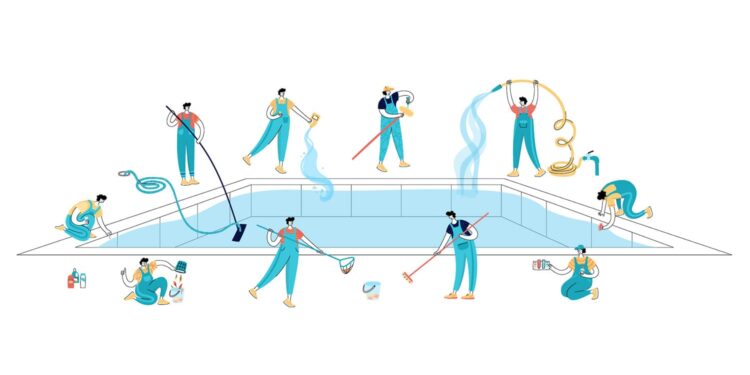Lately it seems like the only thing aquatics operators can count on is change. From social distancing lifeguards to managing patron perception, aquatics operators have had to adapt in uncharted territory.
How exactly are the world’s leading aquatics facilities adapting to the new normal? By taking notice and taking action for the change that lies ahead.
Adapting to Patrons’ Expectations
We have entered a seismic shift that has changed patrons’ expectations. We all use our senses to determine how safe our environment is, and patrons shouldn’t smell a pool before they see it. What patrons used to tolerate, they won’t anymore. Making new facility improvements patrons cannot only hear about, but also experience will help facilities stay afloat.
Successful rec centers, YMCAs and JCCs have addressed these challenges to reopen and attract patrons back with improved air and water quality from advanced oxidation process (AOP) water treatment. There’s a common misconception that the “pool odor” comes from chlorine when in fact it’s chloramines — the disinfection byproduct (DBP) of chlorine — reacting to organic material like sweat, skin oils and urea. With proven DBP reduction up to 90%, patented hydroxyl-based AOP has made it possible for indoor aquatics facilities to achieve air quality that is fresher, healthier and more enjoyable for patrons and staff.
Doing More With Less
Our budgets are constrained, and aquatics operators have to find ways to maximize what they have while they have it. Even if it’s not broken, now is the time to fix it. New risk-reducing upgrades have opened new doors for operators seeking solutions that will save time, manpower, budget and headache. By reducing chemical consumption, electrical consumption and maintenance costs, supplemental AOP pool sanitation provides affordable protection that minimizes liability. Replacing UV pool systems with AOP methods can save facilities thousands of dollars a year, resulting in the system paying for itself over time. By making capital improvements now, you can better protect your facility from any unforeseen costs and problems in the future. Select AOP manufacturers can even provide facilities with customized cost-saving analyses upon request.
Preparing for the Unexpected Again
While the future remains uncertain, if not unpredictable, aquatics facilities that prepare and adapt will thrive. Rapid adaptation is the new benchmark for successful aquatics facilities. It is key for a facility plan to include how to operate, close and reopen properly. By implementing supplemental sanitation with powerful AOP oxidation, you’ll operate safely, close cost-effectively and reopen quickly. You’ll be able to respond faster to whatever comes your way. You can focus your efforts on people management and community engagement knowing your pool water is taken care of. Adapting to the unexpected means adding new tools to your operational mix.
Looking Ahead
Navigating these waters of change will be a continuous challenge for facilities. Patrons are craving the ability to feel healthy and safe, and an aquatics professional’s role has never been more important. Aquatics operators are at the forefront of maintaining their communities’ safe spaces for exercise, enjoyment and health.
Steve Berens is the CEO of Clear Comfort, and a skilled executive who brings more than 25 years of experience in strategy, marketing, sales and engineering. For additional information, please reach out to info@clearcomfort.com or visit clearcomfort.com/contact.










